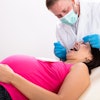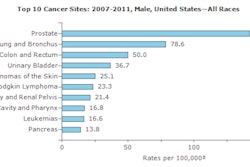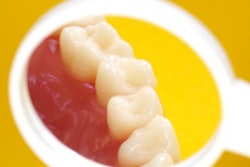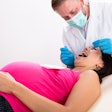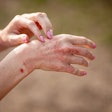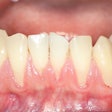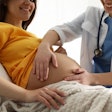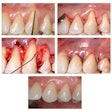Moderate periodontitis increased with age among U.S. adults from 2009 to 2010, but the prevalence of mild and severe periodontitis remained relatively steady at less than 15%, according to a new study from the U.S. Centers for Disease Control and Prevention (CDC).
Approximately 47% of U.S. adults age 30 and older (about 65 million) have periodontitis: 8.7% with mild, 30% with moderate, and 8.5% with severe periodontitis, the study reported.
Periodontitis increases with age; adults 65 and older have periodontitis at rates of 5.9%, 53%, and 11.2% for mild, moderate, and severe forms, respectively.
"As the U.S. adult population ages and is more likely to retain more teeth than previous generations, the prevalence of periodontitis is expected to increase and consequently could increase the need for expenditures for preventive care and periodontal treatment," the CDC said.
Periodontitis is directly associated with lower levels of education and higher levels of poverty, both of which influence the use of dental services by adults. Smoking and chronic diseases such as diabetes were identified as important modifiable risk factors.
The study analyzed 3,743 adults age 30 years and older who were examined by dental hygienists. Gingival recession was defined as the distance between the free gingival margin and the cementoenamel junction; pocket depth was defined as the distance from the free gingival margin to the bottom of the sulcus or periodontal pocket.
Measurements were made at six sites per tooth (mesiobuccal, midbuccal, distobuccal, mesiolingual, midlingual, and distolingual) for all teeth except third molars. For measurements at each tooth site, a periodontal probe (Hu-Friedy PCP 2) with graduations of 2 mm, 4 mm, 6 mm, 8 mm, 10 mm, and 12 mm was positioned parallel to the long axis of the tooth.
Periodontal measurements were used to classify participants as having mild, moderate, or severe disease by using standard-case definitions for surveillance of periodontitis.
The prevalence of periodontitis was significantly higher in non-Hispanic blacks (58.6%) and Mexican-Americans (59.7%) than in non-Hispanic whites (42.6%), the study found. Among all racial/ethnic groups, the prevalence of periodontitis increased with age (24.4% to 70.1%), with the largest relative difference in prevalence within age groups occurring among non-Hispanic whites (range, 16.6%-68%). The prevalence of periodontitis was significantly higher overall among men (56.4%) than women (38.4%), and this finding was consistent among racial/ethnic groups.
By education level, periodontitis was highest among people with less than a high school education (66.9%).
